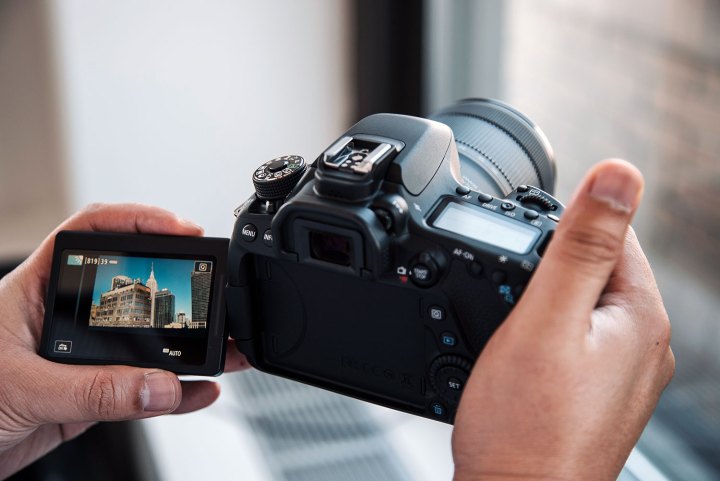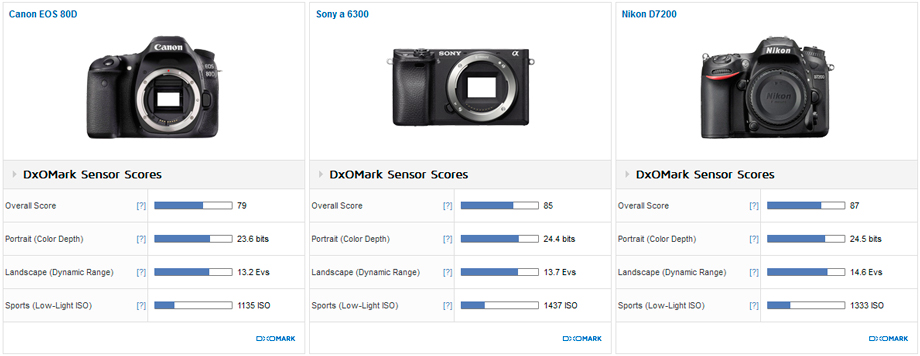
The 80D’s 24-megapixel sensor may look similar on paper to previous models, but it is entirely new. Evidently, Canon has moved the analog-to-digital converter (ADC) to the sensor itself, shortening the electronic path the signal has to travel before being turned into ones and zeros. This has the effect of both lowering noise and increasing dynamic range, and brings Canon closer to par with other manufacturers who have employed on-chip ADC technology for a while.

The measurable effect of this is made clear in DxO’s testing, with the 80D demonstrating improvements across the board. Most notably, dynamic range has increased by over a stop compared to the next-best Canon. Furthermore, the 80D not only beats out the lower-priced Rebel T6-series, but even the higher-end 7D Mark II, which may put potential buyers in somewhat of a conundrum. Unless the high-speed shooting and extra ruggedness of the 7D are required, then the less expensive 80D is probably the better choice for just about anyone.

As always, there were a couple points of caution brought up in the DXO analysis. First, despite Canon’s significant gains, the 80D remains slightly behind current APS-C sensors from Sony, notably those used in the a6300 and Nikon D7200, the 80D’s closest competitors. However, in the real world, the difference is not likely to show up in most situations. Second, the 80D’s improvements over other Canon cameras are most notable at low ISO settings, with dynamic range and color depth decreasing as ISO is increased. Even so, the 80D outperforms its predecessors in terms of high ISO noise levels, so it still maintains an advantage in that regard.
The 80D also offers plenty of other advantages beyond image quality, like a new autofocus system and improved video features. Overall, it seems safe to say that Canon shooters who have been waiting for the right time to upgrade can finally make the move.
Editors' Recommendations
- Nikon D780 vs Canon EOS 6D Mark II: The battle of budget full-frame DSLRs
- 32-megapixel Canon EOS 90D and M6 Mark II set new bar for APS-C sensors




